#orthodox aleuts
Explore tagged Tumblr posts
Text
So, a while back I got really into Alaskan saints and so decided to write an Akathist to St. Peter the Aleut; if you don't know who he was, you'll learn from reading this Akathist. Tagging @idylls-of-the-divine-romance (my go-to guy for reviewing theological poetry) and @sapphosremains (because Anglo-Catholics are some of the few non-Orthodox who won't find this at least a little objectionable).
Kontakion 1: The gospel hath gone out unto the ends of the earth and disciples hath been made of every nation, o Lord; even in the ice-bound darkness of the North Thy church hath been established. For this we cry, with angels and all nations: alleluia!
Oikos 1: And in all places and at all times, o Christ God, Thou art wondrous in Thy saints. Hence we praise Saint Peter the Aleut, Protomartyr of America!
Rejoice, glory of the Arctic ice!
Rejoice, fame of Kodiak Island!
Rejoice, thou who burnest brighter than the Northern Lights!
Rejoice, thou who outshinest the sun upon snow!
Rejoice, for the New World is ennobled by thy blood!
Rejoice, for thy triumph is a blessing to America!
Rejoice, Saint Peter, Protomartyr of America!
Kontakion 2: Thou wast reared amidst pagan darkness, o holy Peter, the depth of which was not known in the Old World at that time, on a snow-bound lonely island. But when the call of the Shepherd was first heard on Kodiak Island, thou didst reply with the cry of: alleluia!
Oikos 2: The monks of Russia didst administer the light of Christ to a people burdened by avaricious colonists and the religion of demons alike; it opened thine eyes, o righteous one.
Rejoice, first-fruit of Alaska!
Rejoice, sheep of an island where sheep were not known!
Rejoice, for the light of Christ pierceth all darkness!
Rejoice, for by Its light we are enlightened!
Rejoice, pagan adopted as a son of God!
Rejoie, heathen who by grace partook of the glory of the Lord!
Rejoice, Saint Peter, Protomartyr of America!
Kontakion 3: When thou wert offered baptism, thou most eagerly accepted. The priest immersed thee in saving water in the name of the blessed Trinity, and upon thee was bestowed the name Peter, mystically linking thee to the glorious Apostle. A soul entered the Kingdom of God, and all the powers of Heaven exclaimed: alleluia!
Oikos 3: The mystery of baptism bestowed upon thee a new name and new life; henceforth, thou wouldst no more be named Cungagnaq, but Peter.
Rejoice, successor to the blessed Apostle!
Rejoice, thou who betrayed not Christ at any time!
Rejoice, son of snow reborn in the water!
Rejoice, child of ice regenerated in the font!
Rejoice, firstborn of a Christian nation!
Rejoice, guide of thy people to the Word!
Rejoice, Saint Peter, Protomartyr of America!
Kontakion 4: Not long after thou wast received into the Church, Spanish raiders abducted thee, carrying thee and nineteen others away to California. In spite of thy youth, the terror of the event and the great distance thou wast taken, thou feared not, but sang: alleluia!
Oikos 4: Though thou wast carried from the frozen shores of Alaska to the burning heat of California, the gold of thy soul was neither melted nor diluted, o longsuffering victor.
Rejoice, prize who sought the prize of life eternal!
Rejoice, captive of God and not of men!
Rejoice, thou who wast free in Christ while in chains!
Rejoice, thou who wore thy bonds as a string of pearls!
Rejoice, gold refined in the fire of the sun!
Rejoice, silver purified in the southern crucible!
Rejoice, Saint Peter, Protomartyr of America!
Kontakion 5: Thou wast confined to a gloomy dungeon with the other abducted Aleut, thy captors deigning to convert thee to the Church of Rome. But thou didst believe in the Father and in Christ, and so thine heart was not troubled and thou didst exclaim with the others in unison: alleluia!
Oikos 5: Although imprisoned in a foreign land by wicked men with evil designs, thou didst rejoice in the Lord who made thy feet like the deer’s.
Rejoice, servant of the lord who freeth captives!
Rejoice, freedman of Christ!
Rejoice, rampart of Orthodoxy!
Rejoice, one stalwart in the faith of the Apostles!
Rejoice, northern light in the Roman darkness!
Rejoice, torch of faith in foreign lands!
Rejoice, Saint Peter, Protomartyr of America!
Kontakion 6: Some monks of the Pope approached thee and thy fellow captives, availing to convert thee to the Roman church. But thou and thy fellow prisoners refused to renounce Holy Orthodoxy, in spite of their threats and abuse, singing: alleluia!
Oikos 6: Though unlearned and far from any learning, thou didst discourse with the educated in defence of the faith, rebuking their many accusations.
Rejoice, thou who succumbed not to falsehood!
Rejoice, thou who spoke the truth with boldness!
Rejoice, one stalwart in Orthodoxy!
Rejoice, opponent of the heterodox!
Rejoice, crown-bearer from a nation without kings!
Rejoice, soldier for Christ from a people without soldiers!
Rejoice, Saint Peter, Protomartyr of America!
Kontakion 7: The Franciscans began to threaten torture, their diabolical determination to break thy faith undeterred by thy steadfastness. But thou wast also undeterred, o Peter, refusing to renounce thine Orthodoxy, appealing instead to Christ and the Mother of God and crying: alleluia!
Oikos 7: Even as they presented the implements of thy torment, thou wast not swayed, instead being comforted by the Lord and readying thyself for thy cross.
Rejoice, confessor like the confessors of old!
Rejoice, hero walking the road of heroes!
Rejoice, ice not melted by the heat of terror!
Rejoice, cedar not bent by the persecutor’s rancour!
Rejoice, rock resistant to the hammer and axe!
Rejoice, jade uncut yet sparkling!
Rejoice, Saint Peter, Protomartyr of America!
Kontakion 8: The hard-hearted Franciscans then began to torture thee, cutting off a toe from each hand. When finished, they asked thee to convert, but thou remained faithful. After removing a finger from each hand, they asked thee again, but thou simply sang: alleluia!
Oikos 8: Burning with impotent rage, the monks then cut off thy hands and thy feet alike, but no mortal or bodiless tyrant could prise thee from the Lord.
Rejoice, for thy blood hath brought thee a crown!
Rejoice, for thy sufferings are recompensed in Heaven!
Rejoice, diamond cut to glittering brilliance!
Rejoice, gold refined in a fire of agony!
Rejoice, victor over thine and thy companion’s enemies!
Rejoice, athlete who hath run the holy race!
Rejoice, Saint Peter, Protomartyr of America!
Kontakion 9: The Franciscans were unable to subject thee to any further tortures, for the loss of blood proved fatal, and thou didst exit the earth and ascend to Christ with thy faith incorrupt. As a new saint entered the Father’s mansions, the chorus of apostles and prophets exclaimed: alleluia!
Oikos 9: The futile anger of the monks continued as thou rose to the bosom of the Lord, but all sorrows of the flesh were behind thee forever as thy soul reaped its reward.
Rejoice, conqueror of the world and the flesh!
Rejoice, triumphant hero of Alaska!
Rejoice, prisoner rewarded with undying freedom!
Rejoice, tortured one compensated with incorruptibility!
Rejoice, prince dressed in blood!
Rejoice, saint adorned with wounds!
Rejoice, Saint Peter, Protomartyr of America!
Kontakion 10: The wicked monks had planned to torture others, endeavouring to capture souls as they had laboured to capture thine, but they received orders to return the prisoners to their native land; the captives set free sang with one voice: alleluia!
Oikos 10: Thy body remained behind, o Peter; they returned it not, in a last gesture of spite towards the one swayed by none of their tortures.
Rejoice, for though thy body is captive thy soul is free!
Rejoice, for thy fellow captives hath been freed from torment!
Rejoice, for thou didst never waver from Christ!
Rejoice, for thou wert always allied with His Church!
Rejoice, unshakeable pillar of the Truth!
Rejoice, impenetrable wall of the Faith!
Rejoice, Saint Peter, Protomartyr of America!
Kontakion 11: The ship of thy fellows at last returned to Kodiak, whence all dismounted in the sight of Saint Herman, equal to the Apostles and evangelist of Alaska. Not finding thee, he enquired as to the cause of thine absence; thy story was related by a friend and witness, at which he cried: alleluia!
Oikos 11: Upon hearing of the many sufferings and the death in faith thou hadst suffered, he made the sign of the cross and exclaimed “holy new martyr Peter, pray to God for us!”
Rejoice, thou who standest at the gate of Paradise!
Rejoice, thou who hast passed through the doors of Heaven!
Rejoice, advocate for our souls before the Father!
Rejoice, intercessor before the Holy Trinity!
Rejoice, first-born saint of the Alutiiq!
Rejoice, glory of the tribes of Alaska!
Rejoice, Saint Peter, Protomartyr of America!
Kontakion 12: In this present age the light of Orthodoxy shineth brightly in Kodiak; there a Christian nation hath been established. All of them, and the rest of the Orthodox people, looketh to thee as a shining example in the past and an intercessor in the future, singing in perfect unity: alleluia!
Oikos 12: Thou, o Peter, attained sainthood by thy sufferings and trials, and by faith; thou didst synergise with the mind of Christ, attaining union with the energies of God.
Rejoice, bearer of a crown shining with the Northern Lights!
Rejoice, one dressed in robes of shimmering snows!
Rejoice, hero stronger than the ocean storms!
Rejoice, martyr mightier than the winter wind!
Rejoice, for mortal sufferings hath won thee immortal glory!
Rejoice, for thy trials were an adornment to the New World!
Rejoice, Saint Peter, Protomartyr of America!
8 notes
·
View notes
Text
In 1812, Orthodox Russians and Aleuts (Native Alaskans) settled in Fort Ross (Northern California) in order to increase the winter food supplies in their Alaskan communities.
The Spaniards, suspecting the Russians of having designs on San Francisco, eventually arrested twenty Orthodox Christian Aleuts in 1815 and transferred them to San Francisco where they were mistreated and subjected to forced labour.
Their captors eventually resorted to torturing these Aleut prisoners in their attempt to make them adopt the Roman Catholic religion. But the Aleuts were steadfast! They showed the crosses they were wearing and said, “We are Christians. We have been baptized.”
Two of them were taken that night, and the one named Peter was tortured while the other was made to look on. First his toes were broken one by one, but the valiant athlete of Christ, truly worthy of the name of the first of the Apostles, continued to assert, “I am a Christian; I will not change my faith!”
The torturers next cut off his fingers, then chopped off his hands and feet with an axe. While streams of blood flowed from his wounds, Peter did not waver, instead repeating that he would not betray his faith, until he gave up his soul unto God and obtained the glorious crown of martyrdom.
When St. Herman of Alaska received the news of St. Peter’s martyrdom, he crossed himself before the icons with great reverence and said, “Holy New Martyr Peter, pray to God for us!”
Saint Peter the Aleut is the first Saint of American origin.
source: The Synaxarion as compiled by Hieromonk Makarios of Simonos Petra on the Holy Mount Athos (entry for December 13, under St. Herman of Alaska)
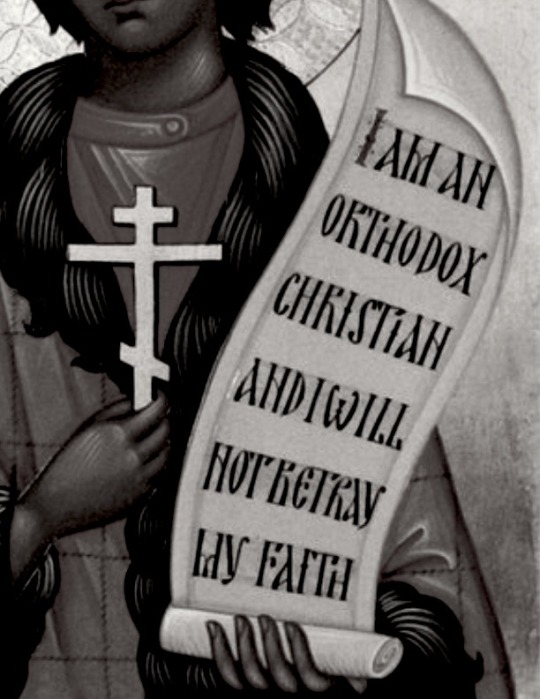
#St. Peter the Aleut#St. Herman of Alaska#saint of the americas#synaxarion#orthodox christianity#eastern orthodoxy#orthodoxy#eastern orthodox#orthodox#christianity#iconography#Alaska#Roman Catholicism#catholicism#catholic
21 notes
·
View notes
Note
I’m seeing some beef between the Catholics and Orthodox about St. Peter the Aleut. Is he real or…? And why Catholics and Orthodox ‘hate’ each other for centuries? Because of this, it would make inquirers like me feel confused as both churches claimed they’re the true churches.
He was real. Online Catholics like to pretend he wasn’t, because they think acknowledging that an Orthodox saint was martyred at the hands of Catholics reflects badly on their Church.
That being said, I wouldn’t worry too much about how Catholics and Orthodox feel about each other, because we get along just fine in real life. Most of the arguments and “hatred” you see between the two branches are just an edgy reenactment of the Great Schism by tryhards on the Internet. Even the Orthodox and Catholic priests in my town get together to hang out occasionally.
7 notes
·
View notes
Text


Saint Herman Orthodox Christian Church - Fairbanks, Alaska
2180 Goldstream Rd, Fairbanks, AK 99709, United States Website: https://www.sthermanchurch.org/ Service Schedule: https://calendar.google.com/calendar/embed?src=fairbanksthermanchurch%40gmail.com&ctz=America/Anchorage
Thank you for visiting St. Herman Orthodox Christian Church in Fairbanks, Alaska, Diocese of Alaska, Orthodox Church in America. The church is the farthest north Orthodox Parish in America. St. Herman was a member of the first missionaries that brought Orthodox Christianity to America. Like St. Herman, we at St. Herman parish are bringing Orthodox Christianity to northern Alaska. The parish is comprised of a diverse number of ethnic backgrounds including Russian, Yupik, Aleut, and many converts. Also in attendance we have soldiers and families from Ft. Wainwright and Eielson Air Force Base along with students from University of Alaska in Fairbanks. All services are sung in English. Visitors are always welcome. [Text from their website]
6 notes
·
View notes
Text
Christ is risen; tell everyone!
Orthodox Christians celebrate Easter today. For the next 40 days, we greet each other with the most important news anyone has ever shared
Christ is Risen! Χριστὸς ἀνέστη
and the faithful respond
Truly He is Risen! Ἀληθῶς ἀνέστη!
Abkhazian – Kyrsa Dybzaheit! Itzzabyrgny Dybzaheit!
Afrikaans – Christus het opgestaan! Hy het waarlik opgestaan!
Albanian (Tosk) – Krishti u ngjall! Vërtet u ngjall!
Aleut – Kristus aq ungwektaq! Pichinuq ungwektaq!
Amharic – (Kristos Tenestwal! Bergit Tenestwal!)
Arabic (standard) – المسيح قام! حقا قام! (al-Masīḥ qām! Ḥaqqan qām!) or المسيح قام! بالحقيقة قام! (al-Masīḥ qām! Bi-l-ḥaqīqati qām!)
Armenian – Քրիստոս յարեա՜ւ ի մեռելոց: Օրհնեա՜լ է Յարութիւնն Քրիստոսի: (western dialect: Krisdos haryav i merelotz! Orhnyal e Haroutyunen Krisdosi!) Քրիստոս հարյա՜վ ի մեռելոց: Օրհնյա՜լ է Հարությունը Քրիստոսի: (eastern dialect: Khristos haryav i merelotz! Orhnyal e Harouthyoune Khristosi!) – (Lit: Christ is risen! Blessed is the resurrection of Christ!)
Aromanian – Hristolu unghia! Daleehira unghia!
Azeri – Məsih dirildi! Həqiqətən dirildi!
Basque – Cristo Berbiztua! Benetan Berbiztua!
Belarusian – Хрыстос уваскрос! Сапраўды ўваскрос! (Chrystos uvaskros! Sapraŭdy ŭvaskros!)
Breton – Dassoret eo Krist! E wirionez dassoret eo!
Bulgarian – Христос възкресе! Наистина възкресе! (Hristos vâzkrese! Naistina vâzkrese!) or in Church Slavonic: Христос воскресе! Воистину воскресе! (Hristos voskrese! Voistinu voskrese!)
Carolinian – Lios a melau sefal! Meipung, a mahan sefal!
Catalan – Crist ha ressuscitat! Veritablement ha ressuscitat!
Cebuano – Si Kristo nabanhaw! Matuod nga Siya nabanhaw!
Chamorro – La’la’i i Kristo! Magahet na luma’la’ i Kristo!
Church of England – Alleluia! Christ is Risen! He is risen indeed! Alleluia![3]
Chuvash – Христос чĕрĕлнĕ! Чăн чĕрĕлнĕ! (Khristós chərəlnə! Chæn chərəlnə!)
Coptic (Bohairic) – ΠιχρίςΤος αϥτωΝϥ! ϦΕΝ οΥΜεθΜΗι αϥτωΝϥ! (Pi’Christos aftonf! Khen oumetmi aftonf!)
Cornish – Thew Creest dassorez! En weer thewa dassorez!
Croatian – Krist uskrsnu! Uistinu uskrsnu!
Czech – Kristus vstal z mrtvých! Vpravdě vstal z mrtvých!
Danish – Kristus er opstanden! Sandelig Han er Opstanden!
Dothraki – Khal Asvezhvenanaz yathoay! Me Yathoay Me nem nesa!
Dovahzul – Saviik los alok! Rok los vahzah alok!
Dutch – Christus is opgestaan! Hij is waarlijk opgestaan! (Netherlands) or Christus is verrezen! Hij is waarlijk verrezen! (Belgium)
English – “Christ is risen! Truly, He is risen!” or “Christ is risen! Indeed, He is risen!” or “He [or ‘The LORD’] is risen! He [or ‘The LORD’] is risen indeed!” or “Christ has risen! Indeed, He has!” or “Christ is risen! He is risen, indeed!”
Esperanto – Kristo leviĝis! Vere Li leviĝis!
Estonian – Kristus on üles tõusnud! Tõesti, Ta on üles tõusnud!
Fijian – Na Karisito tucake tale! Io sa tucake tale!
Filipino – Si Kristo ay nabuhay! Totoo, Siya nga ay nabuhay!
Finnish – Kristus nousi kuolleista! Totisesti nousi!
French – Le Christ est ressuscité! En verité il est ressuscité! or Le Christ est ressuscité! Vraiment il est ressuscité!
Frisian – Kristus is opstien! Wis is er opstien!
Galician -Cristo resucitou! De verdade resucitou!
Ganda – Kristo Ajukkide! Kweli Ajukkide!
Georgian – ქრისტე აღსდგა! ჭეშმარიტად აღსდგა! (Kriste aghsdga! Cheshmaritad aghsdga!)
German – Christus (or: Der Herr) ist auferstanden! Er ist wahrhaft (or: wahrhaftig) auferstanden!
Gikuyu – Kristo ni muriuku! Ni muriuku nema!
Greek – Χριστὸς ἀνέστη! Ἀληθῶς ἀνέστη!
Hawaiian – Ua ala aʻe nei ʻo Kristo! Ua ala ʻiʻo nō ʻo Ia!
Hebrew (modern) – המשיח קם! באמת קם! (Hameshiach qam! Be’emet qam!)
Hindustani – येसु मसीह ज़िन्दा हो गया है! हाँ यक़ीनन, वोह ज़िन्दा हो गया है! – یسوع مسیح زندہ ہو گیا ہے! ہاں یقیناً، وہ زندہ ہو گیا ہے! (Yesu Masih zinda ho gaya hai! Haan yaqeenan, woh zinda ho gaya hai!)
Hungarian – Krisztus feltámadt! Valóban feltámadt!
Icelandic – Kristur er upprisinn! Hann er sannarlega upprisinn!
Ido – Kristo riviveskabas! Ya Il rivivesakabas!
Indonesian – Kristus telah bangkit! Dia benar-benar telah bangkit!
Interlingua – Christo ha resurgite! Vermente ille ha resurgite! or Christo ha resurrecte! Vermente ille ha resurrecte!
Irish – Tá Críost éirithe! Go deimhin, tá sé éirithe!
Italian – Cristo è risorto! È veramente risorto!
Japanese – ハリストス復活!実に復活! (Harisutosu fukkatsu! Jitsu ni fukkatsu!)
Kapampangan – Y Cristo sinubli yang mebie! Sinubli ya pin mebie!
Khmer – Preah Christ mean preah choan rous leong vinh! trung mean preah choan rous leong vinh men!
Klingon – Hu’ta’ QISt! Hu’bejta’!
Korean – 그리스도 부활하셨네! 참으로 부활하셨네! (Geuriseudo Buhwalhasheotne! Chameuro Buhwalhasheotne!)
Latin – Christus resurrexit! Resurrexit vere!
Latvian – Kristus (ir) augšāmcēlies! Patiesi viņš ir augšāmcēlies!
Lithuanian – Kristus prisikėlė! Tikrai prisikėlė!
Macedonian
Malagasy – Nitsangana tamin’ny maty i Kristy! Nitsangana marina tokoa izy!
Malayalam – ക്രിസ്തു ഉയിര്ത്തെഴുന്നേറ്റു! തീര്ച്ചയായും ഉയിര്ത്തെഴുന്നേറ്റു! (Christu uyirthezhunnettu! Theerchayayum uyirthezhunnettu!
Maltese – Kristu qam! Huwa qam tassew! or Kristu qam mill-mewt! Huwa qam tassew!
Mandarin – 基督復活了! 他確實復活了! (Jidu fuhuo-le! Ta queshi fuhuo-le!)
Manx – Taw Creest Ereen! Taw Shay Ereen Guhdyne!
Marathi – Yeshu Khrist uthla ahe! Kharokhar uthla ahe!
Middle English – Crist is arisen! Arisen he sothe!
Navajo – Christ daaztsą́ą́dę́ę́ʼ náádiidzáá! Tʼáá aaníí daaztsą́ą́dę́ę́ʼ náádiidzáá!
Neo-Syriac – ܡܫܝܚܐ ܩܡܠܗ! ܒܗܩܘܬܐ ܩܡܠܗ! (Mshikha qimlih! bhāqota qimlih!)
Norwegian Bokmål – Kristus er oppstanden! Han er sannelig oppstanden!
Norwegian Nynorsk – Kristus er oppstaden! Han er sanneleg oppstaden!
Old English – Crist aras! Crist soþlice aras! (Lit: Christ arose! Christ surely arose!)
Old Irish – Asréracht Críst! Asréracht Hé-som co dearb!
Persian – مسیح برخاسته است! به راستی برخاسته است! (Masih barkhaste ast! Be rasti barkhaste ast!)
Polish – Chrystus zmartwychwstał! Prawdziwie zmartwychwstał!
Portuguese – Cristo ressuscitou! Em verdade ressuscitou! or Cristo ressuscitou! Ressuscitou verdadeiramente!
Quechua – Cristo causarimpunña! Ciertopuni causarimpunña!
Quenya – (Hristo Ortane! Anwave Ortanes!)
Rastafarian – Krestos a uprisin! Seen, him a uprisin fe tru!
Romanian – Hristos a înviat! Adevărat a înviat!
Romansh – Cristo es rinaschieu! In varded, el es rinaschieu!
Russian – Христос воскрес! Воистину воскрес! (Christos voskres! Voistinu voskres!)
Rusyn – Хрістос воскрес! Воістину воскрес! (Hristos voskres! Voistynu voskres!)
Sardinian – Cristu est resuscitadu! Aberu est resuscitadu!
Scottish – Tha Crìosd air èiridh! Gu dearbh, tha e air èiridh!
Serbian – Христос васкрсе! Ваистину васкрсе! / Hristos vaskrse! Vaistinu vaskrse! (Christos vaskrse! Vaistinu vaskrse!) or Христос воскресе! Ваистину воскресе! / Hristos voskrese! Vaistinu voskrese! (Christos voskrese! Vaistinu voskrese!)
Sicilian – Cristu arrivisciutu esti! Pibbiru arrivisciutu esti!
Slovak – Kristus vstal z mŕtvych! Skutočne vstal (z mŕtvych)! (although the Church Slavonic version is more often used: Christos voskrese! Voistinu voskrese!)
Slovenian – Kristus je vstal! Zares je vstal!
Spanish – ¡Cristo resucitó! ¡En verdad resucitó!
Swahili – Kristo Amefufukka! Kweli Amefufukka!
Swedish – Kristus är uppstånden! Han är sannerligen uppstånden!
Syriac – ܡܫܝܚܐ ܩܡ! ܫܪܝܪܐܝܬ ܩܡ! (Mshiḥa qām! sharīrāīth qām! or Mshiḥo Qom! Shariroith Qom!)
Tamil – கிறிஸ்து உயிர்த்தெழுந்தார், மெய்யாகவே அவர் உயிர்த்தெழுந்தார்.
The Episcopal Church – Alleluia. Christ is Risen. The Lord is risen indeed. Alleluia.[4]
Tigrigna – (Christos tensiou! Bahake tensiou!)
Tlingit – Xristos Kuxwoo-digoot! Xegaa-kux Kuxwoo-digoot!
Toki Pona – jan sewi Kolisu li tawa tan moli! ni li lon: ona li tawa tan moli!
Traditional (as per Church Slavonic) – Христос воскресе! Навистина воскресе! (Hristos voskrese! Navistina voskrese!)
Turkish – Mesih dirildi! Hakikaten dirildi!
Turoyo-Syriac – ܡܫܝܚܐ ܩܝܡ! ܫܪܥܪܐܝܬ ܩܝܡ! (Mshiḥo qāyem! Shariroith qāyem!)
Tzeltal – Cha’kuxaj Kajwaltik Kristo! Ta melel cha’kuxaj!
Tzotzil – Icha’kuxi Kajvaltik Kristo! Ta melel icha’kuxi!
Ukrainian – Христос воскрес! Воістину воскрес! (Khrystos voskres! Voistynu voskres!)
Uyghur – ئەيسا تىرىلدى! ھەقىقەتىنلا تىرىلدى! (Əysa tirildi! Ⱨəⱪiⱪətinla tirildi!)
Uzbek – Масих тирилди! Хақиқатдан тирилди! (Masih tirildi! Haqiqatdan tirildi!)
Vernacular – Христос воскресна! Навистина воскресна! (Hristos voskresna! Navistina voskresna!)
Vietnamese – Chúa ki-tô đã phục sinh! qu̓a thật ngài đã phục sinh!
Walloon – Li Crist a raviké! Il a raviké podbon!
Waray – Hi Kristo nabanwaw! Matuod nga Hiya nabanhaw!
Welsh – Atgyfododd Crist! Yn wir atgyfododd!
Yupik languages – Xris-tusaq Ung-uixtuq! Iluumun Ung-uixtuq!
77 notes
·
View notes
Text
Saints&Reading: Saturday, April 13, 2024
march 31_april 13
SAINT INNOCENT OF MOSCOW, ENLIGHTNER OF ALASKA ANS SIBERIA (1879)
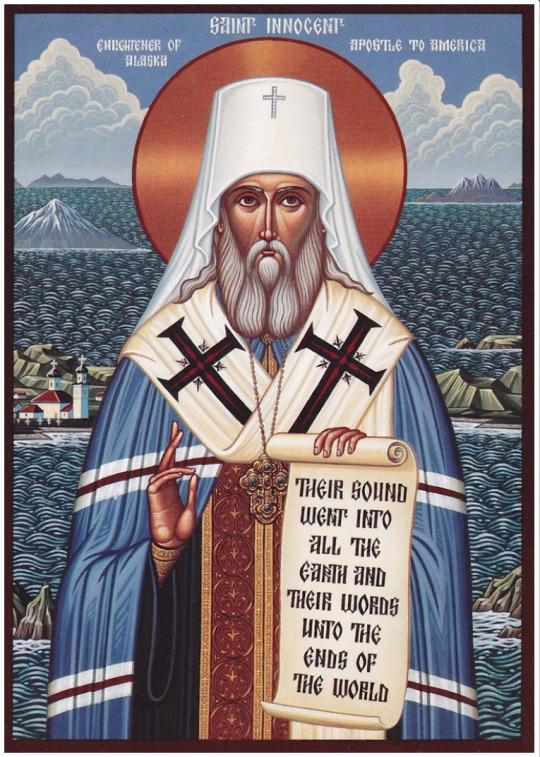
Icon written by hieroscemamonk Ephrem.
Our father among the saints Innocent of Alaska, Equal-to-the-Apostles and Enlightener of North America (1797-1879), was a Russian Orthodox priest, bishop, archbishop, and Metropolitan of Moscow and all Russia. He is known for his missionary work, scholarship, and leadership in Alaska and the Russian Far East during the 1800s. He is known for his great zeal for his work as well as his great abilities as a scholar, linguist, and administrator. He was a missionary, later a bishop and archbishop in Alaska and the Russian Far East. He learned several native languages and was the author of many of the earliest scholarly works about the natives and their languages, as well as dictionaries and religious works in these languages. He also translated parts of the Bible into several native languages.
St. Innocent, né Ivan (John) Evseyevich Popov-Veniaminov, was born on August 26, 1797, into the family of a church server in the village of Anginskoye, Verkholensk District, Irkutsk province, in Russia. His father died when John was six.
In 1807, John entered the Irkutsk Theological Seminary. In 1817 he married, and on May 18, 1817 he was ordained deacon of the Church of the Annunciation in Irkutsk. He completed his studies in 1818. He was appointed a teacher in a parish school, and on May 18, 1821 he was ordained priest to serve in the Church of the Annunciation.
At the beginning of 1823, Bishop Michael of Irkutsk received instructions to send a priest to the island of Unalaska in the Aleutian Islands of Alaska. Father John Veniaminov volunteered to go, and on May 7, 1823, he departed from Irkutsk, accompanied by his aging mother, his wife, his infant son Innocent, and his brother Stefan. After a difficult one-year journey, they arrived at Unalaska on July 29, 1824.
After John and his family built and moved into an earthen hut, he undertook the construction of a church on the island and set about studying the local languages and dialects. He trained some of his parishioners in construction techniques and with them undertook the construction of a church, which was finished the following July.
Father John's parish included the island of Unalaska and the neighboring Fox Islands and Pribilof Islands, whose inhabitants had been converted to Christianity before his arrival, but retained many of their pagan ways and customs. Father John often traveled between the islands in a canoe, battling the stormy Gulf of Alaska.
His travels over the islands greatly enhanced Father John Veniaminov's familiarity with the local dialects. In a short time he mastered six of the dialects. He devised an alphabet of Cyrillic letters for the most widespread dialect, the Unagan dialect of Aleut and, in 1828, translated the Holy Gospel of St. Matthew and other church materials into that dialect, which were eventually published in 1840 with the blessing of the Holy Synod of the Russian Orthodox Church. In 1829, he journeyed to the Bering Sea coast of the Alaskan mainland and preached to the people there. In 1836, his travels even extended to the south, to the Ross Colony north of San Francisco and to the Spanish missions of northern California. At Ross Colony he conducted services at its small, wooden chapel.
In 1834, Father John was transferred to Sitka Island, to the town of Novoarkhangelsk, later called Sitka. He devoted himself the Tlingit people and studied their language and customs. His studies there produced the scholarly works Notes on the Kolushchan and Kodiak Tongues and Other Dialects of the Russo-American Territories, with a Russian-Kolushchan Glossary.
In 1838, Father John journeyed to St. Petersburg and Moscow, Russia, and Kiev, Ukraine, to report on his activities and request an expansion of the Church's activities in Russian America. While he was there, he received notice that his wife had died. He requested permission to return to Sitka. Instead, it was suggested that he take vows as a monk. Father John at first ignored these suggestions, but, on November 29, 1840, made his vows. He chose the name Innocent in honor of Bishop Innocent of Irkutsk.
On December 15, 1840, Archimandrite Innocent Veniaminov was consecrated Bishop of Kamchatka and Kuril Islands in Russia and the Aleutian Islands in Russian America. His see was located in Novoarkhangelsk, which he returned to in September 1841. He spent the next nine years in the administration of his see as well as on several long missionary journeys to its remote areas. On April 21, 1850, Bishop lnnocent was elevated to Archbishop. In 1852, the Yakut area was admitted to the Kamchatka Diocese, and in September 1853, Archbishop Innocent took up permanent residence in the town of Yakutsk. Innocent took frequent trips throughout his enlarged diocese. He devoted much energy to the translation of the scriptures and service books into the Yakut (Sakha) language.
In April 1865, Archbishop Innocent was appointed a member of the Holy Governing Synod of the Church.
On November 19, 1867, he was appointed the Metropolitan of Moscow, replacing his friend and mentor, Filaret, who had died. While there, he undertook revisions of many Church texts that contained errors, raised funds to improve the living conditions of priests and established a retirement home for priests.
Innocent died on March 31, 1879. He was buried on April 5, 1879, at Troitse-Sergiyeva Lavra.
Source: St Innocent Church
VENERABLE HYPATIUS, MONK HEALER OF THE KIEV CAVE (14th.c.)

Saint Hypatius the Healer of the Caves, attained glory through his severe fasting and prayerful vigilance. By night he stood at prayer, slept very little, and ate only bread and water.
Saint Hypatius devoted himself entirely to the service of the sick, and received from God the gift of healing. Those sick with various illnesses often hastened to his prayerful intercession.
The memory of Saint Hypatius is celebrated also on August 28, on the Synaxis of the Saints of the Far Caves.


1 CORINTHIANS 15:47-57
47 The first man was of the earth, made of dust; the second Man is the Lord from heaven. 48 As was the man of dust, so also are those who are made of dust; and as is the heavenly Man, so also are those who are heavenly. 49 And as we have borne the image of the man of dust, we shall also bear the image of the heavenly Man. 50 Now this I say, brethren, that flesh and blood cannot inherit the kingdom of God; nor does corruption inherit incorruption. 51 Behold, I tell you a mystery: We shall not all sleep, but we shall all be changed- 52 in a moment, in the twinkling of an eye, at the last trumpet. For the trumpet will sound, and the dead will be raised incorruptible, and we shall be changed. 53 For this corruptible must put on incorruption, and this mortal must put on immortality. 54 So when this corruptible has put on incorruption, and this mortal has put on immortality, then shall be brought to pass the saying that is written: "Death is swallowed up in victory."55 O Death, where is your sting? O Hell, where is your victory? 56 The sting of death is sin, and the strength of sin is the law. 57 But thanks be to God, who gives us the victory through our Lord Jesus Christ.
MARK 7:31-37
31 Again, departing from the region of Tyre and Sidon, He came through the midst of the region of Decapolis to the Sea of Galilee. 32 Then they brought to Him one who was deaf and had an impediment in his speech, and they begged Him to put His hand on him. 33 And He took him aside from the multitude, and put His fingers in his ears, and He spat and touched his tongue. 34 Then, looking up to heaven, He sighed, and said to him, "Ephphatha," that is, "Be opened." 35 Immediately his ears were opened, and the impediment of his tongue was loosed, and he spoke plainly. 36 Then He commanded them that they should tell no one; but the more He commanded them, the more widely they proclaimed it. 37 And they were astonished beyond measure, saying, "He has done all things well. He makes both the deaf to hear and the mute to speak."
#orthodoxy#orthodoxchristianity#easternorthodoxchurch#originofchristianity#spirituality#holyscriptures#gospel#wisdom#saints
7 notes
·
View notes
Text
a different kind of martyr
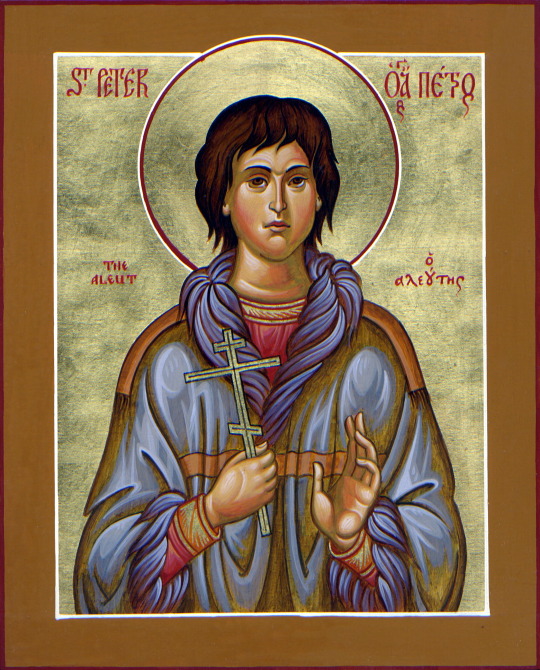
Some 17 years ago, I had to find my patron saint. Most Orthodox don't pick their own; it's generally assigned at birth or close enough it amounts to the same thing. But when I converted as an adult, I got to choose saints for myself, my kids, and (as it turned out) my wife.
You have to feel the sarcasm dripping off that "got to"--I don't do intuition or spiritual experiences, so it was not a welcome opportunity. Maybe if I'd realized that it didn't have to be forever, it would have felt a little less daunting. There's no particular reason you can't have a special connection with more than one saint; and in my case, I had the perfect opportunity to switch if I'd wanted to. Due to a clerical oversight, our baptismal certificates weren't processed until I thought to ask more than a decade later; and in the event, they accidentally assigned my son's patron to both of us on paper. But I'm nothing if not committed, so I have no interest in changing--even if there's no formal documentation, even if he might not be real, even if his story is grossly problematic for Christian unity.
Looking back over my list of reasons, it's nice to see that most of them need no revision, except this one:
Sort of related to the previous connection, he was martyred by Catholic missionaries. I'll say to start out that this doesn't inspire in me a hatred for Catholics. But it does speak to both the "Western" chauvinism that infused colonial efforts and the tendency in "Western" Christianity to discount the authenticity of the "Eastern" faith. (I'm using quotes here, because in this case the Orthodox are coming from the West and Catholics are coming from the East.) I would say this tendency applies just as much to Protestantism, whatever one might say about whether Protestants would have martyred Peter for refusing to convert. I suspect I'm always going to have to deal with my fellow Euro-Americans questioning the legitimacy of my Orthodox faith, and it will be good to have a saint who understands so intimately that struggle.
I think I've come around to a more balanced view of Eastern and Western problems, as I noted six years ago when I had a chance to visit Mission San Gabriel. Russian colonialism wasn't necessarily any better than Spanish; it sent native Alaskans 3000 miles from home to California and provoked a clash of empires that ground them to dust. Likewise, Eastern Christianity has made more than its fair contribution to religious strife. And as an Orthodox Christian born and bred in the West, I get to own both sides.
I still love St. Peter, because he's not to blame for any of this; he was a victim of circumstance, but his simple faith still speaks for itself. He wasn't trying to convert anyone or win points in a war; he just wanted to be heard and seen for who he was. The problem comes when we use his legacy to further our own prejudice.
Perhaps an analogy would help. There's been a long-standing problem with Christians using the "Christ killer" label against Jewish people throughout history. Now, it is true that Jewish people killed Christ, or at least wanted him dead. Not all of them, or even most of them. And Jesus himself and his disciples were also Jewish. But the point is certainly made in Scripture that Jewish people killed him. And if we leave it there, we might feel it's a justifiable claim. But we have to ask why it's framed this way at a time when Christianity was still very much a Jewish movement. He came as the Jewish Messiah, and his own people--those who should have received him--called for his death. That's relevant not because they're Jewish (as one race among others), but because they were his own people. The Christian response should not be to assign blame but to ask, if we are his people, how do we put him to death by our actions? If it comes to assigning labels, then we are the Christ killers.
Now, here's the analogy: if Peter the Aleut was tortured and killed by some Catholics in California, what does that mean? Why is it important that they were Catholics? Any Christian martyr can be killed for their faith by pagans or Muslims or atheists, and die with a great confession of Christ on their lips. But St. Peter died for his faith at the hands of Christians, who didn't need an equal-to-apostle to introduce them to Jesus. And while they may have missed some important points, they already had their own martyrs to show them the way of the cross. St. Peter's great witness was that he died at the hands of Christians--that after the law and the prophets and the gospel and 1500 years of Christian civilization, we could still so easily commit the original sin of fratricide. That in the name of Jesus, who showed us how to lay down life for our brothers, we could take their life instead. That we could travel half-way around the world to carry the gospel, meet Christians coming the other way around, and plant our flag through their heart to claim we got here first.
The meaning of St. Peter's death is not that, as we always knew, those Catholics are evil. It is a mirror to show us how miserably we all fail in our witness to Christ. To show how our cause blinds us to the person before us. To question whether we're really fighting for God's truth or for our own scrap of territory. If his death has meaning, it can only be that we killed him.
2 notes
·
View notes
Text
Saint Herman the Wonderworker of Alaska & First Saint of America
Reading from the Synaxarion:
Saint Herman (his name is a variant of Germanus) was born near Moscow in 1756. In his youth he became a monk, first at the Saint Sergius Hermitage near Saint Petersburg on the Gulf of Finland; while he dwelt there, the most holy Mother of God appeared to him, healing him of a grave malady. Afterwards he entered Valaam Monastery on Valiant Island in Lake Ladoga; he often withdrew into the wilderness to pray for days at a time. In 1794, answering a call for missionaries to preach the Gospel to the Aleuts, he came to the New World with the first Orthodox mission to Alaska. He settled on Spruce Island, which he called New Valaam, and here he persevered, even in the face of many grievous afflictions mostly at the hands of his own countrymen in the loving service of God and of his neighbour. Besides his many toils for the sake of the Aleuts, he subdued his flesh with great asceticism, wearing chains, sleeping little, fasting and praying much. He brought many people to Christ by the exam ple of his life, his teaching, and his kindness and sanctity, and was granted the grace of working miracles and of prophetic insight. Since he was not a priest, Angels descended at Theophany to bless the waters in the bay; Saint Herman used this holy water to heal the sick. Because of his unwearying missionary labours, which were crowned by God with the salvation of countless souls, he is called the Enlightener of the Aleuts, and has likewise been renowned as a wonderworker since his repose in 1837.
Apolytikion of Herman of Alaska in the Fourth Tone
Blessed ascetic of the northern wilds and gracious intercessor for the whole world, teacher of the Orthodox Faith, good instructor of piety, adornment of Alaska and joy of all America, holy Father Herman, pray to Christ God that He save our souls.
Kontakion of Herman of Alaska in the Plagal of the Fourth Tone
Monk of Valaam, who through ascetic labours didst become an emulator of the desert-dwelling Saints of old, O beloved of the Mother of God and Virgin, having taken prayer as sword and shield, thou wast revealed as the scourge of pagan darkness and the demons' hosts. Hence we cry to thee: O Saint Herman, pray that we be saved.
0 notes
Text
Monday, June 12 - Sitka










Sitka was our first port in the southeastern portion of Alaska and it was a popular spot today. There were two large cruise ships docked at about 6 miles north of town, and another two smaller ships (450-600 passengers) anchored out with us in the bay. We were the furthest from the tender dock, so it took about a half hour from our ship to the pier. Because tours get priority, we had to wait awhile until we got to shore, and by that time the town was starting to fill up. It's a relatively small place, but they have excellent signage and a walking route through the main part of town, and close streets in the main tourist area to vehicles when cruise ships are in town. Food trucks line the streets next to t-shirt shops and a few small galleries. The flowers here were in full bloom and with a mostly sunny day (except for one rain shower) it was lovely.
Sitka was originally settled by the Russian American Company, led by Alexander Baranov, although on their first attempt they were driven out by the local Tlingit people in 1802. When the Russians returned two years later, this time with more ships and with Aleut mercenaries, the "battle of Sitka" was won by the Russians, who established a busy trading port dealing mainly in sea otter pelts. As a result, for a while, Sitka was the busiest port on the west coast of North and South America, and was a thriving cultured village. Eventually the sea otters became overhunted and scarce, and the Russian government decided that maintaining Russian America (as it was called) was too costly, and Russia sold Alaska to the US in 1867.
From there on, Sitka because fishing and logging town, although it swelled in importance (and population) during WWII after the Japanese invasion on the Aleutian islands. Since then, logging dwindled after the large plywood mill closed in 1992, but tourism has become the main "industry" here. The influence from the Tlingit people is still an important part of the town, and an early attempt at fostering tourism resulted in the establishment of park with totem poles from all over SE Alaska being brought here at the turn of the 20th century. Today it is a National Historical Park, and as the totem poles gradually fall apart they are replaced by poles carved by local indigenous carvers. The poles are strung out along a trail, which winds through the woods and along the river, but the park also includes other buildings in town. For many years there was a college here, primarily for indigenous students, and the Russian Bishop's House (later a school) is also the original from 1842. The Russian Orthodox Church (which every Alaskan town seems to have) is a reconstruction, though, as the original burned in 1996.
We spent a good amount of time in the wooded park, taking all the trails - including the ones without totem poles, which got us away from almost all the crowds. We also wandered some back streets to find other sites, such as the Russian blockhouse, which is a reconstruction of one of three in the original Russian fort. We also walked by the local radio station - love their "caw" sign. Many structures, such as a old sawmill building, have been repurposed into things like a science center, complete with salmon hatchery (and gift shop). Beneath the tourist town surface, there does seem to be a real community here, with amenities more common in larger towns. Sitka is the only town on the "outside" of the passages and islands of SE Alaska, and since it is on an island (Baranov Island) the only access is by air or sea, and we saw good size jets taking off from the airport north of town.
We had dinner with some of our friends from our earlier leg, and enjoyed a repeat of our entertainment director's program of Broadway songs. She's a very talented and lovely person, but I now have all those Broadway earworms crawling around in my head.
I didn't post yesterday, but our crossing from Seward to Sitka was the roughest sea we have had on this entire trip (about 3.6m seas). After crowds at lunch in Kenai Fjords, the restaurant was pretty empty, and almost everyone we saw was from our original trip, since we all seem to have built up some immunity to the roughness. It wasn't a good start for many of the newbies on board. It was also very gray and rainy, so we just enjoyed the view from the glass-fronted "yacht club". Some of the waves threw spray up past the windows and we were on deck 8. Nice to be inside!
Tomorrow we are going up Tracy Arm (or Endicott Arm) to one of several glaciers there (ideally), and the weather could go either way. We're going out in kayaks again, so we're hoping for the best (and dressing for the worst). After all, it is Alaska.
0 notes
Text
Alaska Native Orthodox Saints
St. Jacob Netsvetov, Enlightener of Alaska (1802-1864)
Feast Day: 26th July

The son of a Russian fur trader and an Aleut mother who was the first Alaska Native to become an Orthodox priest and spent the rest of his life preaching the Orthodox faith in Alaska; by the time he died, he had created an alphabet for the Aleut language, exorcised demons and baptised well over a thousand people. The full story is here.
Troparion: Righteous Father Jacob, adornment of Atka and the Yukon delta, offspring of Russian America, flower of brotherly unity, healer of sickness, and terror of demons, you offered yourself as a living sacrifice to bring light to a searching people. Pray to Christ God that our souls may be saved!
St. Olga of Alaska/Olga Michael/Olga of Kwethluk (1916-1979)
Feast Day: 10th November

A Yupik matushka (priest's wife) known in her village as a midwife, charity distributer and firm yet compassionate presence, canonised for the miracles associated with her post-mortem; in particular, a sexually abused woman who experienced a vision of St. Olga that proved particularly healing. The full story is here.
Troparion: By your righteous deeds, you were revealed to the world as an image of the perfect servant of the Lord in Alaska. By your fasting, vigil and prayers, you were inspired in your evangelical life. You fed the hungry, and you cared for the poor. You served as a midwife, and you brought babies into the world. You nurtured children, and you clothed all those in need. Now, O Holy Olga, you stand at the right-hand of Christ the Master, and you intercede for our souls.
St. Peter the Aleut, Protomartyr of North America (unknown - 1815)
Feast Day: 24th September

A young Suqpiaq ("the Aleut" is a misnomer by a monk who wasn't good at distinguishing Native groups) man who was one of the first converts to Orthodoxy in North America. He was captured by the Spanish in a raid, and tortured in an attempt to make him convert to Roman Catholicism; he refused, and the tortures eventually killed him. When St. Herman of Alaska (the chief evangelist of Alaska) heard the story, he cried out "Holy New Martyr Peter, pray to God for us!" The full story is here.
Troparion: Today Alaska rejoices and America celebrates, for the New World has been sanctified by martyrdom. Kodiak echoes with songs of thanksgiving, Iliamna and Kenai observe the Festival of Faith. The apostle and martyr Juvenaly is glorified and Peter the Aleut is exalted by his voluntary sacrifice. In their devotion and love for the Lord they willingly endured persecution and death for the Truth. Now in the Kingdom of Heaven they intercede for our souls.
Troparion for the Synaxis of All Saints:
Adorned in the blood of Your Martyrs throughout all the world, as if clothed in purple and linen, through them Your Church cries out to You, O Christ God: “Bestow Your bounties upon Your people, grant peace to Your habitation, and great mercy to our souls.”
#since i was a kid i loved reading about american indian culture#and now i'm orthodox i learnt they yielded multiple saints#and in alaska#the coolest of all the states#so i had to make this post#christianity#orthodox#saints
21 notes
·
View notes
Photo
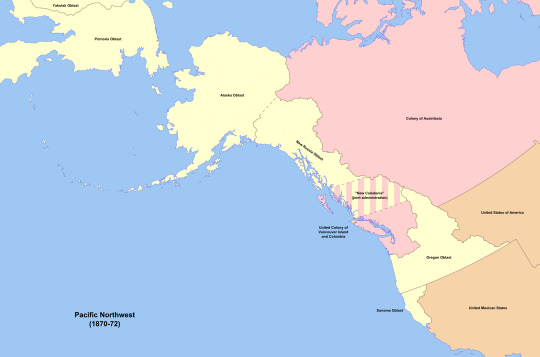
Russian America - The history school left out.
Russian America (Russian: Русская Америка, Russkaya Amerika) was the name of the Russian colonial possessions in North America from 1733 to 1867. Its capital was Novo-Archangelsk (New Arkhangelsk), which is now Sitka, Alaska, United States. Settlements spanned parts of what are now the U.S. states of California, Alaska and three forts in Hawaii. Formal incorporation of the possessions by Russia did not take place until the Ukase of 1799 which established a monopoly for the Russian–American Company and also granted the Russian Orthodox Church certain rights in the new possessions. Many of its possessions were abandoned in the 19th century. In 1867, Russia sold its last remaining possessions to the United States of America for $7.2 million ($129 million in today's terms).
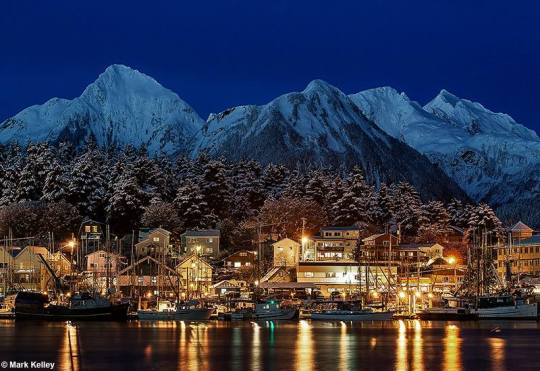
The earliest written accounts indicate that the first Europeans to reach Alaska came from Russia. In 1648 Semyon Dezhnev sailed from the mouth of the Kolyma River through the Arctic Ocean and around the eastern tip of Asia to the Anadyr River. One legend holds that some of his boats were carried off course and reached Alaska. However, no evidence of settlement survives. Dezhnev's discovery was never forwarded to the central government, leaving open the question of whether or not Siberia was connected to North America.
In 1725, Tsar Peter the Great called for another expedition. As a part of the 1733–1743 Second Kamchatka expedition, the Sv. Petr under the Dane Vitus Bering
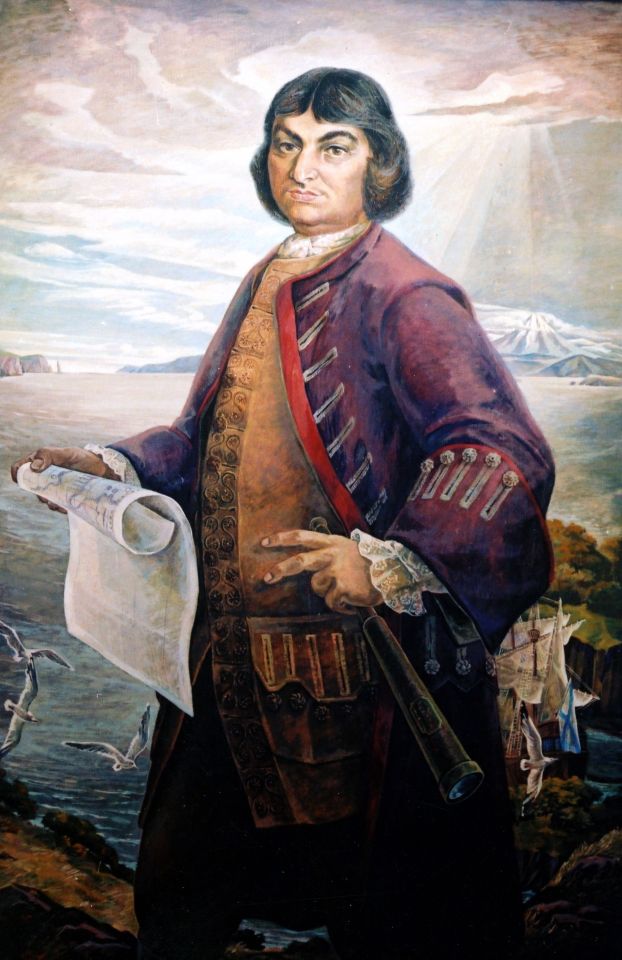
and the Sv. Pavel under the Russian Alexei Chirikov set sail from the Kamchatkan port of Petropavlovsk in June 1741.
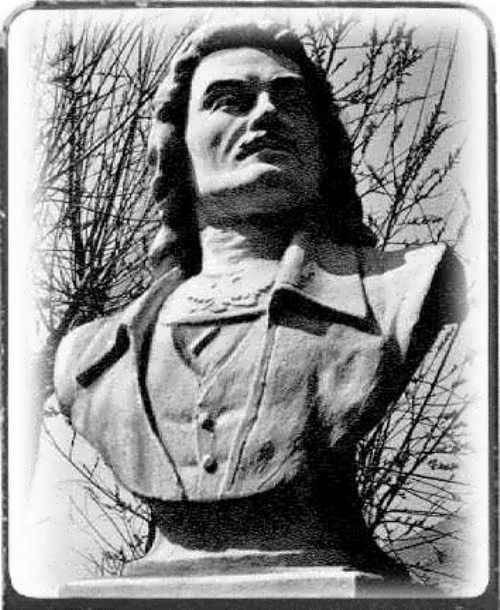
They were soon separated, but each continued sailing east. On 15 July, Chirikov sighted land, probably the west side of Prince of Wales Island in southeast Alaska. He sent a group of men ashore in a longboat, making them the first Europeans to land on the northwestern coast of North America.
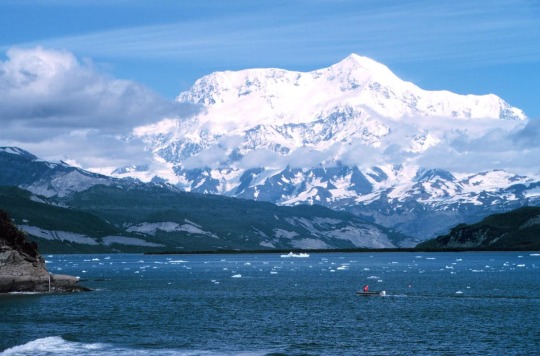
On roughly 16 July, Bering and the crew of Sv. Petr sighted Mount Saint Elias on the Alaskan mainland; they turned westward toward Russia soon afterward. Meanwhile, Chirikov and the Sv. Pavel headed back to Russia in October with news of the land they had found.
In November Bering's ship was wrecked on Bering Island. There Bering fell ill and died, and high winds dashed the Sv. Petr to pieces. After the stranded crew wintered on the island, the survivors built a boat from the wreckage and set sail for Russia in August 1742. Bering's crew reached the shore of Kamchatka in 1742, carrying word of the expedition. The high quality of the sea-otter pelts they brought sparked Russian settlement in Alaska.
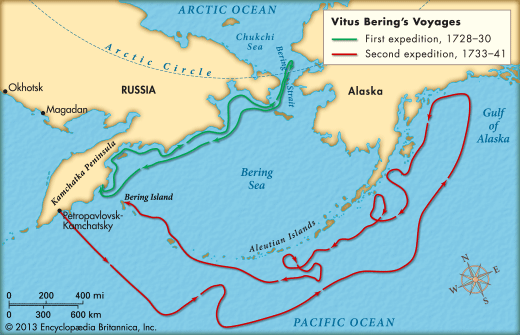
Beginning in 1743, small associations of fur-traders began to sail from the shores of the Russian Pacific coast to the Aleutian islands. As the runs from Asiatic Russia to America became longer expeditions (lasting two to four years or more), the crews established hunting- and trading-posts. By the late 1790s some of these had become permanent settlements. Approximately half of the fur traders came from the various European parts of the Russian Empire, while the others had Siberian or mixed origins.
Rather than hunting the marine life themselves, the Russian promyshlenniki forced the Aleuts to do the work for them, often by taking hostage family-members in exchange for hunted seal-furs. This pattern of colonial exploitation resembled some of the Russian promyshlenniki practices in their expansion into Siberia and the Russian Far East. As word spread of the potential riches in furs, competition among Russian companies increased and the Aleuts were enslaved. Catherine the Great, who became Empress of Russia in 1763, proclaimed goodwill toward the Aleuts and urged her subjects to treat them fairly. On some islands and parts of the Alaska Peninsula, groups of traders had been capable of relatively peaceful coexistence with the local inhabitants. Other groups could not manage the tensions and committed acts of violence. Hostages were taken, families were split up, and individuals were forced to leave their villages and settle elsewhere. The growing competition between the trading companies, merging into fewer, larger and more powerful corporations, created conflicts that aggravated the relations with the indigenous populations. Over the years, the situation became catastrophic.
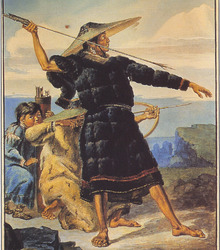
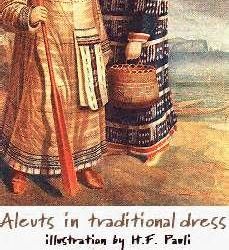
As the animal populations declined, the Aleuts, already too dependent on the new barter-economy fostered by the Russian fur-trade, were increasingly coerced into taking greater and greater risks in the highly dangerous waters of the North Pacific to hunt for more otter. As the Shelekhov-Golikov Company of 1783-1799 developed a monopoly, its use of skirmishes and violent incidents turned into systematic violence as a tool of colonial exploitation of the indigenous people. When the Aleuts revolted and won some victories, the Russians retaliated, killing many and destroying their boats and hunting gear, leaving them no means of survival. The most devastating effects came from disease: during the first two generations (1741/1759-1781/1799 AD) of Russian contact, 80 percent of the Aleut population died from Eurasian infectious diseases; these were by then endemic among the Europeans, but the Aleut had no immunity against the new diseases.
Though the Alaskan colony was never very profitable because of the costs of transportation, most Russian traders were determined to keep the land for themselves. In 1784 Grigory Ivanovich Shelekhov, who later set up the Russian-Alaska Company that developed into the Alaskan colonial administration, arrived in Three Saints Bay on Kodiak Island with two ships, the Three Saints (Russian: Три Святителя) and the St. Simon. The Koniag Alaska Natives harassed the Russian party and Shelekhov responded by killing hundreds and taking hostages to enforce the obedience of the rest. Having established his authority on Kodiak Island, Shelekhov founded the second permanent Russian settlement in Alaska (after Unalaska, permanently settled since 1774) on the island's Three Saints Bay.
In 1790 Shelekhov, back in Russia, hired Alexander Andreyevich Baranov to manage his Alaskan fur-enterprise. Baranov moved the colony to the northeast end of Kodiak Island, where timber was available. The site later developed as what is now the city of Kodiak. Russian colonists took Koniag wives and started families whose surnames continue today, such as Panamaroff, Petrikoff, and Kvasnikoff. In 1795 Baranov, concerned by the sight of non-Russian Europeans trading with the natives in southeast Alaska, established Mikhailovsk six miles (10 km) north of present-day Sitka. He bought the land from the Tlingit, but in 1802, while Baranov was away, Tlingit from a neighboring settlement attacked and destroyed Mikhailovsk. Baranov returned with a Russian warship and razed the Tlingit village. He built the settlement of New Archangel (Russian: Ново-Архангельск, romanized: Novo-Arkhangelsk) on the ruins of Mikhailovsk. It became the capital of Russian America – and later the city of Sitka.
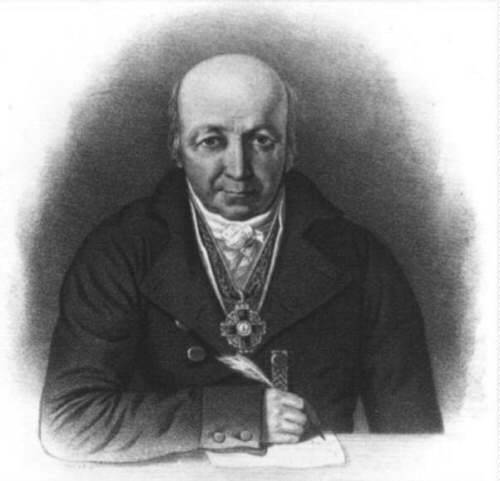
As Baranov secured the Russians' settlements in Alaska, the Shelekhov family continued to work among the top leaders to win a monopoly on Alaska's fur trade. In 1799 Shelekhov's son-in-law, Nikolay Petrovich Rezanov, had acquired a monopoly on the American fur trade from Tsar Paul I. Rezanov formed the Russian-American Company. As part of the deal, the Tsar expected the company to establish new settlements in Alaska and to carry out an expanded colonisation programme.
Alexander Andreyevich Baranov, called "Lord of Alaska" by Hector Chevigny, played an active role in the Russian–American Company and was the first governor of Russian America.
By 1804, Baranov, now manager of the Russian– American Company, had consolidated the company's hold on fur trade activities in the Americas following his suppression of the local Tlingit clan at the Battle of Sitka. The Russians never fully colonized Alaska. For the most part, they clung to the coast and shunned the interior.
From 1812 to 1841, the Russians operated Fort Ross, California. From 1814 to 1817, Russian Fort Elizabeth was operating in the Kingdom of Hawaii.
By the 1830s, the Russian monopoly on trade was weakening. The British Hudson's Bay Company was leased the southern edge of Russian America in 1839 under the RAC-HBC Agreement, establishing Fort Stikine which began siphoning off trade.
A company ship visited the Russian American outposts only every two or three years to give provisions. Because of the limited stock of supplies, trading was incidental compared to trapping operations under the Aleutian laborers. This left the Russian outposts dependent upon British and American merchants for sorely needed food and materials; in such a situation Baranov knew that the RAC establishments "could not exist without trading with foreigners." Ties with Americans were particularly advantageous since they could sell furs at Guangzhou, close to the Russians at the time. The downside was that American hunters and trappers encroached on territory Russians considered theirs.
Starting with the destruction of the Phoenix in 1799, several RAC ships sank or were damaged in storms, leaving the RAC outposts with scant resources. On 24 June 1800, an American vessel sailed to Kodiak Island. Baranov negotiated the sale of over 12,000 rubles worth of goods carried on the ship, averting "imminent starvation." During his tenure Baranov traded over 2 million rubles worth of furs for American supplies, to the consternation of the board of directors. From 1806 to 1818 Baranov shipped 15 million rubles worth of furs to Russia, only receiving under 3 million rubles in provisions, barely half of the expenses spent solely on the Saint Petersburg company office.
The Russo-American Treaty of 1824 recognized exclusive Russian rights to the fur trade above Latitude 54°, 40' North, with the American rights and claims restricted to below that line. This division was repeated in the Treaty of Saint Petersburg, a parallel agreement with the British in 1825 (which also settled most of the border with British North America). However, the agreements soon went by the wayside, and with the retirement of Alexandr Baranov in 1818, the Russian hold on Alaska was further weakened.
When the Russian-American Company's charter was renewed in 1821, it stipulated that the chief managers from then on be naval officers. Most naval officers did not have any experience in the fur trade, so the company suffered. The second charter also tried to cut off all contact with foreigners, especially the competitive Americans. This strategy backfired since the Russian colony had become used to relying on American supply ships, and the United States had become a valued customer for furs. Eventually the Russian– American Company entered into an agreement with the Hudson's Bay Company, which gave the British rights to sail through Russian territory.
At Three Saints Bay, Shelekov built a school to teach the natives to read and write Russian, and introduced the first resident missionaries and clergymen who spread the Russian Orthodox faith. This faith (with its liturgies and texts, translated into Aleut at a very early stage) had been informally introduced, in the 1740s–1780s. Some fur traders founded local families or symbolically adopted Aleut trade partners as godchildren to gain their loyalty through this special personal bond. The missionaries soon opposed the exploitation of the indigenous populations, and their reports provide evidence of the violence exercised to establish colonial rule in this period.
The RAC's monopoly was continued by Emperor Alexander I in 1821, on the condition that the company would financially support missionary efforts. Company board ordered chief manager Etholén to build a residency in New Archangel for bishop Veniaminov. When a Lutheran church was planned for the Finnish population of New Archangel, Veniamiov prohibited any Lutheran priests from proselytizing to neighboring Tlingits. Veniamiov faced difficulties in exercising influence over the Tlingit people outside New Archangel, due to their political independence from the RAC leaving them less receptive to Russian cultural influences than Aleuts. A smallpox epidemic spread throughout Alaska in 1835-1837 and the medical aid given by Veniamiov created converts to Orthodoxy.
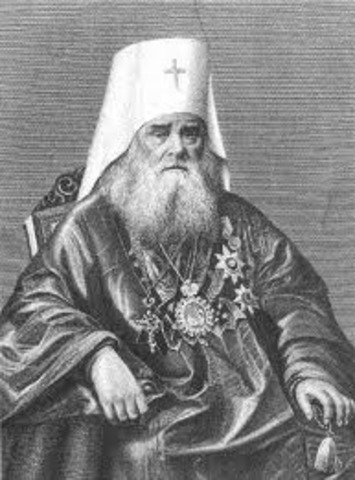
Inspired by the same pastoral theology as Bartolomé de las Casas or St. Francis Xavier, the origins of which come from early Christianity's need to adapt to the cultures of Antiquity, missionaries in Russian America applied a strategy that placed value on local cultures and encouraged indigenous leadership in parish life and missionary activity. When compared to later Protestant missionaries, the Orthodox policies "in retrospect proved to be relatively sensitive to indigenous Alaskan cultures." This cultural policy was originally intended to gain the loyalty of the indigenous populations by establishing the authority of Church and State as protectors of over 10,000 inhabitants of Russian America.
(The number of ethnic Russian settlers had always been less than the record 812, almost all concentrated in Sitka and Kodiak).
Difficulties arose in training Russian priests to attain fluency in any of the various Alaskan Indigenous languages. To redress this, Veniaminov opened a seminary for mixed race and native candidates for the Church in 1845. Promising students were sent to additional schools in either Saint Petersburg or Irkutsk, the later city becoming the original seminary's new location in 1858. The Holy Synod instructed for the opening of four missionary schools in 1841, to be located in Amlia, Chiniak, Kenai, Nushagak. Veniamiov established the curriculum, which included Russian history, literacy, mathematics and religious studies.
A side effect of the missionary strategy was the development of a new and autonomous form of indigenous identity. Many native traditions survived within local "Russian" Orthodox tradition and in the religious life of the villages. Part of this modern indigenous identity is an alphabet and the basis for written literature in nearly all of the ethnic-linguistic groups in the Southern half of Alaska. Father Ivan Veniaminov (later St. Innocent of Alaska), famous throughout Russian America, developed an Aleut dictionary for hundreds of language and dialect words based on the Russian alphabet.
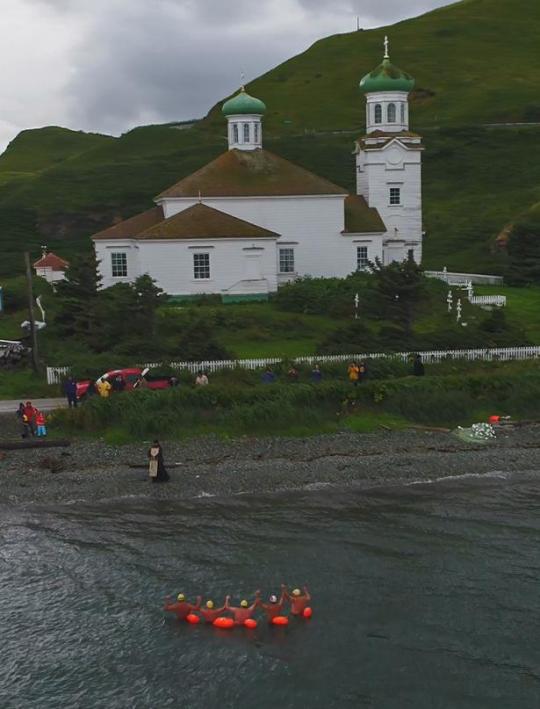
The most visible trace of the Russian colonial period in contemporary Alaska is the nearly 90 Russian Orthodox parishes with a membership of over 20,000 men, women, and children, almost exclusively indigenous people. These include several Athabascan groups of the interior, very large Yup'ik communities, and quite nearly all of the Aleut and Alutiiq populations. Among the few Tlingit Orthodox parishes, the large group in Juneau adopted Orthodox Christianity only after the Russian colonial period, in an area where there had been no Russian settlers nor missionaries. The widespread and continuing local Russian Orthodox practices are likely the result of the syncretism of local beliefs with Christianity.
In contrast, the Spanish Roman Catholic colonial intentions, methods, and consequences in California and the Southwest were the product of the Laws of Burgos and the Indian Reductions of conversions and relocations to missions; while more force and coercion was used, the indigenous peoples likewise created a kind of Christianity that reflected many of their traditions.
Observers noted that while their religious ties were tenuous, before the sale of Alaska there were 400 native converts to Orthodoxy in New Archangel. Tlingit practitioners declined in number after the lapse of Russian rule, until there were only 117 practitioners in 1882 residing in the place, by then renamed as Sitka.
By the 1860s, the Russian government was ready to abandon its Russian America colony. Zealous over-hunting had severely reduced the fur-bearing animal population, and competition from the British and Americans exacerbated the situation. This, combined with the difficulties of supplying and protecting such a distant colony, reduced interest in the territory. After Russian America was sold to the U.S. in 1867, for $7.2 million (2 cents per acre, totaling $114,657,180.85 in today's USD), all the holdings of the Russian–American Company were liquidated.
Following the transfer, many elders of the local Tlingit tribe maintained that "Castle Hill" comprised the only land that Russia was entitled to sell. Other indigenous groups also argued that they had never given up their land; the Americans encroached on it and took it over. Native land claims were not fully addressed until the latter half of the 20th century, with the signing by Congress and leaders of the Alaska Native Claims Settlement Act.
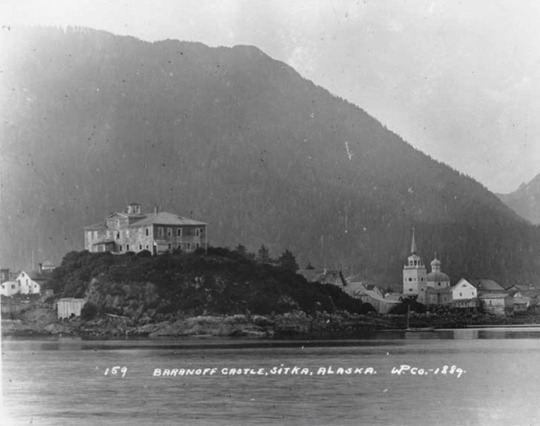
At the height of Russian America, the Russian population had reached 700, compared to 40,000 Aleuts. They and the Creoles, who had been guaranteed the privileges of citizens in the United States, were given the opportunity of becoming citizens within a three-year period, but few decided to exercise that option. General Jefferson C. Davis ordered the Russians out of their homes in Sitka, maintaining that the dwellings were needed for the Americans. The Russians complained of rowdiness of the American troops and assaults. Many Russians returned to Russia, while others migrated to the Pacific Northwest and California.
#russian america#sitka#vitus bering#alexei chirikov#aleuts#native alaskans#baranov#bishop veniamiov#russian orthodox#syncretism#spanish missions#castle hill#ak
24 notes
·
View notes
Text
The Aleut
The indigenous people of the Aleutian Islands of Alaska and Russia, the Aleuts (Unangan, Unungas) are a group whose traditional territory spans America and Asia.
The Aleut live in partially underground houses known as barabaras, with multiple families living in a single barabara. They remain primarily hunter-gatherer-fisherpeople.
Visual arts of the Aleut include baidarkas (Aleutian kayaks for hunting), weaving, embroidery, and mask making. In particular, masks are used to portray figures from oral history and religion. The masks were carved wood, decorated with paint, feathers, and other natural products.
The Aleut used tattoos and piercings, especially facial markings, for religious and cultural reasons. As people who lived in possibly the harshed climate in the world, the clothing was beautiful and incredibly effective. They used the natural water repulsion of animal skins to create hooded parkas that remain unparalleled for cold, snowy climates.
The first Outside contact with the Aleut was by Russian Orthodox missionaries in the late 18th century.
#history#world history#long post#indigenous history#american history#ancient history#russian history#asian history#russia#aleut#indigenous people#indigenous#native american history#native american#first nations history#national native american heritage month#aleutian#native alaska#native alaskan#Unangan#Unungas
9 notes
·
View notes
Text


St. Juvenaly & His Companion Orthodox Mission - Wasilla, Alaska
962 Hyer Rd, Wasilla, AK 99654, United States Website:https://stjuvenalywasilla.org/ Service Schedule: (Listed at bottom of page) https://stjuvenalywasilla.org/
Thank you for taking the time to visit St. Juvenaly and His Companion Orthodox Church’s website. The church building is new, but Orthodox Christianity is not. Orthodox Christianity was established by our Lord, God, and Savior Jesus Christ on the day of Pentecost over 2000 years ago. The Church is now established in Wasilla, and we are committed to bringing the fullness of the Gospel of Jesus Christ to all here in the Mat-Su Valley. We hope that you find this site helpful and informative, and as an aid for your spiritual journey. We encourage all to “come and see”, to visit and to worship with us. Our services are primarily in English with a mixture of Slavonic, Unangam Tunuu (Aleut), Yupik, and Tlingit. [Text from their site]
0 notes
Text
On This Day in 1867 the US Purchased Alaska From Russia
— The Moscow Times | March 30, 2920

A Russian Orthodox Church in Nilichnik, Alaska. Jet Lowe/Library of Congress
Today marks the 153rd anniversary of the Alaska Purchase, in which Russia sold Alaska to the United States for 7.2 Million USD, or roughly 2 cents per acre.
Russians are speculated to have first reached Alaska in the 1600s, when commercial fur trappers traversed Siberia and arrived on the North American continent. Regular trapping expeditions between Siberia and Alaska began in the 1740s, at which time Russian settlements began appearing on the Alaskan coast. The Russian Orthodox church followed, hoping to convert natives to Orthodoxy.
In the century following the formal establishment of the Russian-Alaskan fur trade, the Alaskan sea otter was all but wiped out and historians note many instances of subjugation of the Aleut people at the hands of the Russian settlers. By the mid-1800s it was clear that the venture was not profitable for Russia; the trapping resources were depleted, and there was little hope of ever fully settling the vast territory with its harsh conditions. Upon Russia’s sale of the territory to the United States, questions were raised by indigenous leaders about whether the land had ever been Russia’s to sell. But nonetheless, Alaska remains a part of the United States to this day.
Vestiges of Alaska’s Russian past are still visible in the landscape. Many coastal towns still bear Russian names, and there are nearly 100 Russian Orthodox churches still active in the state. In some regions, like the long-isolated Ninilchik, dialects of the Russian language can still be detected in the speech of older residents. The former Russian-Alaskan capital, Novoarkhangelsk, is the modern-day city of Sitka.
#United States 🇺🇸#The Russian Empire | Imperial Russia | Russia 🇷🇺 | 1867#US 🇺🇸 | Purchased Alaska#Former Russian-Alaskan Capital | Novoarkhangelsk | Now Sitka
3 notes
·
View notes
Text
SAINTS&READING: WEDNESDAY, NOVEMBER 13, 2024
october 31_november 13
NEW HIEROMARTYR PRIEST JOHN KOCHUROV OF CHICAGO AND St PETERSBURG (1917)

The Life of Saint John Kochurov, Hieromartyr, Missionary in America, First Clergy Martyr of the Russian Revolution.
On October 31, 1917, in Tsarskoye Selo, a bright new chapter, full of earthly grief and heavenly joy, was opened in the history of sanctity in the Russian Church: the holiness of the New Martyrs of the twentieth century. The opening of this chapter is linked to the name of the Russian Orthodox shepherd who became one of the first to give his soul for his flock during this twentieth century of fighters against God: Archpriest John Kochurov.
Father John Kochurov was born on July 13, 1871, in the village of Bigildino-Surky of the district of Danky in the Ryazan region, to a pious family of many children. His parents were the priest Alexander Kochurov and his wife Anna. Father Alexander Kochurov served almost all his life in the Church of Theophany in Bigildino-Surky village in the Diocese of Ryazan from the moment of his ordination on March 2, 1857, and having combined all those years of service in the parish with the fulfillment of his obligations as a teacher of the God’s Law in the Bigildin’s public school, imprinted in the consciences of his sons, and particularly in that of John, the most spiritually sensitive of them, a radiant image of the parish priest, full of deep humility and high inspiration.1
Fr. John’s upbringing, being based on the remarkable traditions of many generations of the clergy and bound with the people’s natural following after Orthodox piety, foretold his setting out on the path of preparation for pastoral service. Father John’s study — initially at Danky Theological School and afterwards at Ryazan Theological Seminary — was marked not only with outstanding success in the mastery of theological and secular disciplines, but with remarkable examples of Church piety which he demonstrated during a time when the everyday life of a provincial theological school was not always spotless in the moral sense.
The future Father John successfully graduated in 1891 from the Theological Seminary in Ryazan. Having passed the entrance exams for the Saint Petersburg Theological Academy, he became a student at one of the best theological schools in Russia.2
During the period of Fr. John’s study at the Saint Petersburg Theological Academy, his propensity to regard theological education as a preparation primarily for future service as a parish priest became clearly defined, while at the same time, Fr. John already during his student days coupled the possibility of his service as a parish priest with that of missionary activity, in which he saw the embodiment of the ideal of the Orthodox pastor. After his graduation from Saint Petersburg Theological Academy with the distinction of a true student, Fr. John was sent, in accordance with his long desire for missionary service, to the Diocese of the Aleutians and Alaska.3

Not long after his marriage to Alexandra Chernyshova, Fr. John’s arrival in protestant America put him in touch with a life dissimilar in many respects from his accustomed life in Orthodox Russia. For his first sojourn in the U.S.A. Fr. John arrived in New York, which with its mundane ways was so different from the spiritual life of the Russian cities. Not having yet learned the English language, Fr. John, thanks to the brotherly support of the New York Orthodox community — at that time of modest size — did manage to adjust himself to the life of the country, till then unknown to him, without any particular psychological or other complications. It must be noted that Church life in the Diocese of Alaska and the Aleuts was very different in character from that in other parts of the country, which was vast in its territory but rather small in the number of clergy. Specifically, the Russian Orthodox missions in Northern California, on the Aleutian Islands, and in Alaska had at that time already existed for about a hundred years, and Church life was conducted on a foundation of rather numerous parish communities which possessed significant financial resources, having become accustomed over several generations to life in America. But Orthodox life in the rest of the country was only being initiated, and it required a great deal of evangelical activity by the clergy to create normal Orthodox parishes within the multinational and multiconfessional local population. It was precisely to that part of the diocese that Fr. John was destined to be sent when he was ordained to the dignity of a priest on August 27, 1895, by the Most Reverend Nicholas, Bishop of Alaska and the Aleuts.4
The beginning of Fr. John’s parish service was associated with the opening, by Bishop Nicholas, of the Orthodox parish in Chicago in 1892. Assigned in 1895 by order of the Holy Synod to be a parish priest at Saint Vladimir’s Cathedral in Chicago, Fr. John was put in touch with a parish life that was strikingly different from the Orthodox parishes in Russia, which were organized and rooted in a living tradition many centuries old. Being a lonely island of Orthodox Christian life, remotely situated many hundreds of miles from the other scattered Orthodox parishes in North America, Saint Vladimir’s Church in Chicago,5 together with the Church of the Three Hierarchs in the town of Streator with which it was affiliated, in the less than three years of its existence still had not managed to become formed as a parish in the full sense of this word, and it indeed required heroic labors from the young Fr. John to be established in a proper way.
Beginning his work at the parish of Chicago and Streator, which was relatively small and multinational in its constituency, Fr. John nourished these people...Continue reading Orthodox Church in America


Colossians 1:18-23
18 And He is the head of the body, the church, who is the beginning, the firstborn from the dead, that in all things He may have the preeminence. 19 For it pleased the Father that in Him all the fullness should dwell, 20 and by Him to reconcile all things to Himself, whether things on earth or things in heaven, having made peace through the blood of His cross. 21 And you, who once were alienated and enemies in your mind by wicked works, yet now He has reconciled 22 in the body of His flesh through death, to present you holy, and blameless, and above reproach in His sight- 23 if indeed you continue in the faith, grounded and steadfast, and are not moved away from the hope of the gospel which you heard, which was preached to every creature under heaven, of which I, Paul, became a minister.
Luke 11:42-46
42 But woe to you Pharisees! For you tithe mint and rue and all manner of herbs, and pass by justice and the love of God. These you ought to have done, without leaving the others undone. 43 Woe to you Pharisees! For you love the best seats in the synagogues and greetings in the marketplaces. 44 Woe to you, scribes and Pharisees, hypocrites! For you are like graves which are not seen, and the men who walk over them are not aware of them. 45 Then one of the lawyers answered and said to Him, "Teacher, by saying these things You reproach us also." 46 And He said, "Woe to you also, lawyers! For you load men with burdens hard to bear, and you yourselves do not touch the burdens with one of your fingers.
#orthodoxy#orthodoxchristianity#easternorthodoxchurch#originofchristianity#spirituality#holyscriptures#gospel#bible#wisdom#faith#saint
3 notes
·
View notes
Text
Saint Mercurius the Great Martyr of Caesarea in Cappadocia (Troparion — Tone 4)
Thy holy martyr Mercurius,O Lord, / through his sufferings has received an incorruptible crown from Thee, our God. / For having Thy strength, he laid low his adversaries, / and shattered the powerless boldness of demons. / Through his intercessions, save our souls!
Most Holy Theotokos, and Saints Holy Coptic Orthodox Abbess Mother Tamav Irene (Irini), Holy Mother Saint Maria Skobtsova the New Martyr of Paris, Holy Great Martyr Menas of Egypt, Holy Father Saint Moses the Ethiopian (Saint Moses the Black), Archangel Michael, Holy Mother Saint Walatta Petros, Holy Mother Saint Mary Magdalene the Apostle, Peter the Aleut (Cungagnaq), Olga Michael of Alaska, Coretta Scott King, Bayard Rustin, Sergius, Bacchus, Mary of Egypt, Maya Angelou, Marsha P. Johnson, Nicholas of Myra, Florence Li Tim-Oi, Phoebe the Deaconess, Olympia the Deaconess, and Saint Philopater Mercurius (Abu-Saifain) the Great Martyr of Caesarea in Cappadocia pray for us always.
+LORD JESUS CHRIST, SON OF GOD, HAVE MERCY ON US SINNERS. Señor Yeshua el Mesias, Hijo de Bathalá, ten piedad de nosotros pecadores. Señor Yeshua el Mesias, Hijo de Mangechay, ten piedad de nosotros pecadores. LORD YESHUA THE MESSIAH, SON OF ALLAH, HAVE MERCY ON US SINNERS.
0 notes